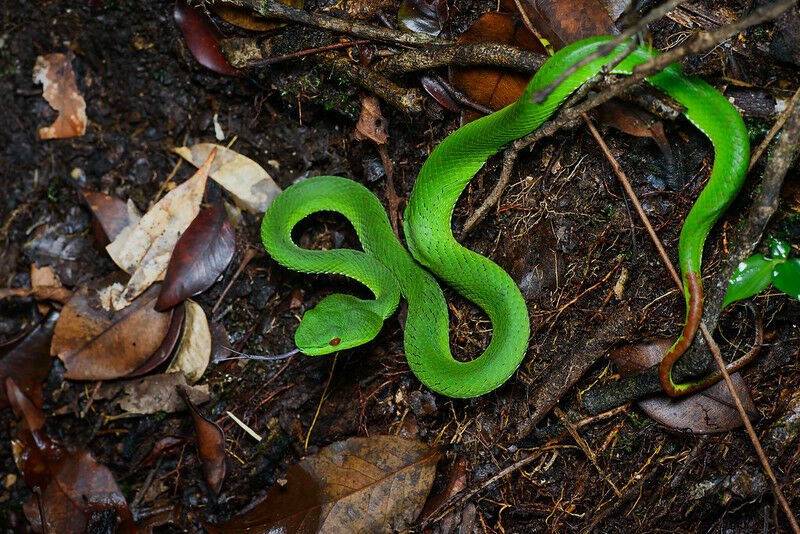Living among snakes in the wilderness taught me about the value of mindfulness and how to apply it to different situations in life.
Part of living in the wild requires an understanding of how to co-exist peacefully with other beings like snakes.
One of the first things that I learned about snakes was their tendencies and hiding places—similar to how meditators learn about the tendencies of the mind and concealed intentions behind their actions.
I’ve learned many lessons about snakes from forest monks including where snakes like to hide (like under rocks or logs) and when they like to come out (for example, at sunset, to soak up the warmth before the coolness of the evening sets in).
Another thing I learned is how to avoid provoking snakes if possible.
For example, hikers should be careful to step on rocks and not over rocks. If a hiker steps over a rock, it might frighten a sheltering snake.
I also learned that a walking stick can be used to alert snakes of your presence as you’re walking on a path.
Yet, despite our best prevention efforts, everyone who spends a lot of time in nature will probably come across a snake at some point and need to know what to do.
When there’s a snake on a path, give it the right-of-way. Don’t attempt to scare, harm or kill the snake. Just get out of its way.
This is common advice, and from my limited experience with snakes, it’s the best advice.
This is also an effective response when encountering a bear who’s blocking a path.
I was told by a forest monk that a bear will normally go away if you don’t give it any attention and let it roam around a bit to satisfy its curiosity.
Snakes and bears very rarely attack humans—unless they feel threatened.
The same advice can be applied to dealing with wandering thoughts that arise in meditation. If thoughts are starved of attention, they’ll usually go away.
But what do you do if you’ve been bitten by a snake?
Responding to a snake bite requires acting with both a sense of urgency and an air of calmness.
It’s important to seek out immediate medical attention.
But it’s equally important to remain still and calm.
If the body moves around a lot, it will cause the venom to spread faster. You also want to keep the area of the bite below the heart to slow the spread of potential venom through the bloodstream.
This specific snake situation is the most terrifying, but hopefully the mind is trained well enough to respond appropriately.
It will know what physical actions to take to heal the bite and what mental actions to take to avoid making the situation worse.
There is confidence in knowing that the mind can handle a possibly life-threatening situation in the wilderness with ease.
And with this wildly well-grounded and unshakeable confidence—that many people lack including myself—nature then becomes peaceful.
But exceptional effort is required to achieve that peace. Because nature isn’t peaceful by nature.


